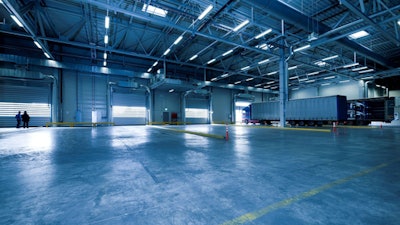
The National Industrial Real Estate Vacancy Rate eclipsed 6.2%, which is up from 5.7% in Q1, according to new data from ITS Logistics.
This means, there is more warehouse space available on the market right now than at any time since the 2020 onset of the pandemic, and rising warehouse wages are driving the demand for technology and automation to reduce labor costs.
“Wages have increased to a regional average of $18.99, which is around a 40-50 percent increase in the last five years. It was not long ago that a starting warehouse employee made $12 to $14 per hour on the high end,” says Ryan Martin, president of assets for ITS Logistics. "As increasing wages put pressure on employers, the demand for technology and automation to reduce labor costs in warehouse operations is also increasing.”
“The Consumer Sentiment is currently up 28.1% from March 2023 and up 13.92% from December 2023,” adds Martin. “This is a highly encouraging indicator for businesses. Overall, retail sales were also up 0.7% in March, seasonally adjusted from February, and up 4% unadjusted year over year. This growth includes services but is also directly impacting retailers in a positive manner.”
Key takeaways:
- By 2032, the market is expected to reach $71.01 billion at a compound annual growth rate (CAGR) of 15.91% during the forecast period 2023 to 2032. Of all the regions, Asia/Pacific is expected to grow the fastest.
- While warehouse automation continues to evolve, rising wages indicate employers are competing for talent in specific regions due to inflationary pressures. Federal and state incentives are also driving manufacturing to key areas, increasing competition for higher-paying jobs and pressuring general warehouse positions.




![Pros To Know 2026 [color]](https://img.sdcexec.com/mindful/acbm/workspaces/default/uploads/2025/08/prostoknow-2026-color.mduFvhpgMk.png?auto=format%2Ccompress&bg=fff&fill-color=fff&fit=fill&h=100&q=70&w=100)







![Pros To Know 2026 [color]](https://img.sdcexec.com/mindful/acbm/workspaces/default/uploads/2025/08/prostoknow-2026-color.mduFvhpgMk.png?ar=16%3A9&auto=format%2Ccompress&bg=fff&fill-color=fff&fit=fill&h=135&q=70&w=240)







